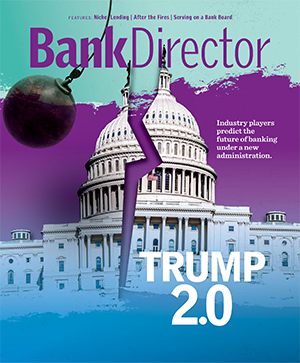
How USAA and Nuance are Helping Millennials Save Money
Brought to you by Fundation

Serving over 11 million members, USAA has been providing financial services to military members and their families in the United States since 1922. And with baby boomers retiring in increasing numbers, USAA is using fintech innovation to better serve the next generation of millennial service men and women coming through the ranks.
According to Moody’s Analytics, U.S. adult millennials ages 35 and younger have a savings rate of negative two percent. Compare that with the 45-54 age bracket, which saves around 3 percent, or people 54 and older, who save 13 percent. For some millennials, serving in the armed forces may be their first real job. Or a millennial’s first experience with USAA might occur when a teenager is opening their first savings account and their parents are members.
USAA is recognizing the need to help millennials achieve their financial goals, and is leveraging technology innovations (and innovators) to do just that. What the company has done is partner with language and voice recognition software company Nuance to develop an app called Savings Coach to help millennials sock away more money.
With over 14,000 employees spread across 75 countries, Nuance is one of the larger players in voice and language technologies. Products like Dragon translation software, and now the Nina multilingual virtual assistant, are used by nearly two-thirds of Fortune 100 companies. Nuance’s Nina technology creates a virtual assistant that can communicate and respond to customers via voice or text. Companies create these assistants, tailored to their own industry, brand and customers utilizing Nina for the underlying architecture. That’s why it made sense for USAA to partner with Nuance to develop Savings Coach, one of the first proactive virtual banking assistants that is specifically designed to help Millennials save money. In fact, USAA was already working with Nuance on a separate virtual assistant initiative utilizing Nina technology when it decided to partner for Savings Coach.
Savings Coach interacts with users through a fun mascot called Ace the Eagle, which can speak and formulate certain responses, effectively creating a basic conversation with users. On the back end, Savings Coach crunches financial data and recommends a daily amount of money that users should have in their savings. It also gamifies the process of saving, something that can hook millennials—a generation that grew up on video games—into the process. For example, Savings Coach will reward users with a badge for completing certain money saving tasks, like cooking at home instead of spending more money ordering pizza delivery.
In a four-month trial pilot, USAA says that Savings Coach helped a cohort of 800 participants save a total of nearly $120,000. One of the things that makes Savings Coach both unique and effective is that Ace interacts and negotiates with users. Didn’t transfer that $100 to savings that you were supposed to this month? Ace might pop up and ask why you forgot, or even suggest transferring $90 if money is tight for that month. One strategy to help millennials save more money is to provide constant re-enforcement of good behaviors, using technology nuanced enough to recognize (and react to) all the small daily decisions that affect one’s ability to save money.
From Nuance’s perspective, the company is now able to explore the application of Nina technology in the financial services industry and hopefully gain a foothold in the future of artificial intelligence as customer facing entities. Savings Coach, unlike most financial apps, is a proactive virtual assistant. And that’s the wave of the future in fintech customer experience— technology that is both personalized and able to anticipate future needs or scenarios. For example, Savings Coach can predict what days a user will buy coffee based on past behaviors, and reward them with a badge or move money into savings when it sees they’ve shown restraint and skipped a day.
The successful partnership between USAA and Nuance to bring Savings Coach to market illustrates a broader trend of financial institutions focusing more than ever on the customer experience. And in today’s digitally dominated world, customer experience is nearly impossible to separate from technology. What makes Savings Coach so effective is that it combines great technology with a focus on personalizing the experience for each customer as much as possible.
Going forward, fintech bots (apps that perform automated tasks) and assistants are likely to broaden in functionality. Future apps will evolve to offer even more customized, proactive financial literacy and advice. The millennial consumer faces many challenges unique to that generation, like low savings, high student loan debt and housing prices that are beyond the reach of many of them. What USAA and Nuance realized is that by applying new thinking to existing problems and technologies, they’re providing millennials with their own personal savings coach, which could be their Ace in the hole.
This is one of 10 case studies that focus on examples of successful innovation between banks and financial technology companies working in partnership. The participants featured in this article were finalists at the 2017 Best of FinXTech Awards.


